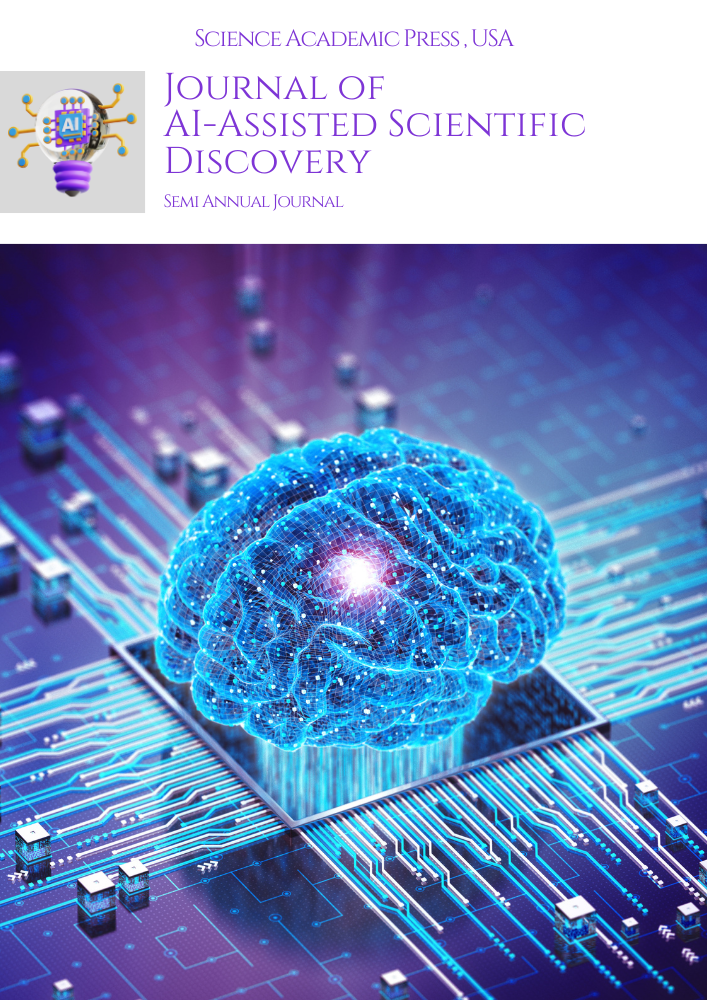Published 25-06-2021
Keywords
- Edge Intelligence,
- Edge Computing,
- Artificial Intelligence,
- Wireless Networks

This work is licensed under a Creative Commons Attribution-NonCommercial-ShareAlike 4.0 International License.
Abstract
With the rapid development of communication technology, the explosive growth of mobile and IoT devices, and growing requirements for real-time data processing, a new paradigm of computing, Edge Computing, has appeared. It moves computing power in the direction of data sources to mitigate latency, bandwidth usage, and dependence on cloud computing. In parallel, Artificial Intelligence (AI) has progressed notably with deep learning technology, highly optimized hardware, and distributed computing paradigms to yield smart applications of high computational loads. Nonetheless, the huge amounts of data generated on the network edge impose heavy challenges in managing data, network optimization, and implementing AI models. This has pushed the convergence of Edge Computing and AI, which has led to a new research area called Edge Intelligence.
Edge Intelligence is further divided into two broad categories:
1.AI for Edge (Intelligence-enabled Edge Computing) – This is concerned with augmenting Edge Computing architectures with AI-based methods, including resource management, task scheduling, computation offloading, and network optimization.
2.Edge AI (Artificial Intelligence on Edge) – This involves executing AI models on edge devices directly, enabling local training and inference with minimal dependence on the cloud, thereby improving privacy, efficiency, and real-time processing.
This paper provides an overview of Edge Intelligence, including fundamental concepts, future technologies, and research directions. We identify critical challenges such as efficient deployment of AI models, decentralized AI learning through federated learning, and edge-centric accelerations of domain-specific hardware, and discuss how Edge Intelligence has the potential to transform domains like autonomous systems, smart cities, factory automation, and wireless networks. This paper documents the present trend and future path to act as the basis for researchers, engineers, and industry players seeking to improve the topic of AI-driven Edge Computing.
Downloads
References
- G. P. A. W. Group, “View on 5G architecture: Version 3.0,” June 2019.
- M. Asif-Ur-Rahman, F. Afsana, M. Mahmud, M. S. Kaiser, M. R. Ahmed, O. Kaiwartya, and A. James-Taylor, “Toward a heterogeneous mist, fog, and cloud-based framework for the internet of healthcare things,” IEEE Internet of Things Journal, vol. 6, no. 3, pp. 4049–4062, June 2019.
- Ericsson, “IoT connections outlook: NB-IoT and Cat-M technologies will account for close to 45 percent of cellular IoT connections in 2024,” Ericsson Mobility Report, June 2019.
- N. Abbas, Y. Zhang, A. Taherkordi, and T. Skeie, “Mobile edge computing: A survey,” IEEE Internet of Things Journal, vol. 5, no. 1, pp. 450–465, Feb 2018.
- ETSI, “Multi-access edge computing (MEC): Study on MEC support for alternative virtualization technologies,” November 2019.
- Y. Sun, M. Peng, Y. Zhou, Y. Huang, and S. Mao, “Application of machine learning in wireless networks: Key techniques and open issues,” 2018.
- Q. Mao, F. Hu, and Q. Hao, “Deep learning for intelligent wireless networks: A comprehensive survey,” IEEE Communications Surveys Tutorials, vol. 20, no. 4, pp. 2595–2621, Fourth quarter 2018.
- M. Chen, U. Challita, W. Saad, C. Yin, and M. Debbah, “Machine learning for wireless networks with artificial intelligence: A tutorial on neural networks,” 2017.
- M. Peng and K. Zhang, “Recent advances in fog radio access networks: Performance analysis and radio resource allocation,” IEEE Access, vol. 4, pp. 5003–5009, 2016.
- Z. Zhou, X. Chen, E. Li, L. Zeng, K. Luo, and J. Zhang, “Edge intelligence: Paving the last mile of artificial intelligence with edge computing,” Proceedings of the IEEE, vol. 107, no. 8, pp. 1738–1762, Aug 2019.
- X. Zhang, Y. Wang, S. Lu, L. Liu, L. Xu, and W. Shi, “OpenEI: An open framework for edge intelligence,” 2019.
- Y. Han, X. Wang, V. C. M. Leung, D. Niyato, X. Yan, and X. Chen, “Convergence of edge computing and deep learning: A comprehensive survey,” 2019.
- M. Peng, S. Yan, K. Zhang, and C. Wang, “Fog-computing-based radio access networks: Issues and challenges,” IEEE Network, vol. 30, no. 4, pp. 46–53, July 2016.
- J. Lin, W. Yu, N. Zhang, X. Yang, H. Zhang, and W. Zhao, “A survey on Internet of Things: Architecture, enabling technologies, security and privacy, and applications,” IEEE Internet of Things Journal, vol. 4, no. 5, pp. 1125–1142, Oct 2017.
- H. B. McMahan, E. Moore, D. Ramage, S. Hampson, and B. A. y Arcas, “Communication-efficient learning of deep networks from decentralized data,” AISTATS, 2016.
- J. Xu, Y. Zeng, and R. Zhang, “UAV-enabled wireless power transfer: Trajectory design and energy optimization,” IEEE Transactions on Wireless Communications, vol. 17, no. 8, pp. 5092–5106, Aug 2018.
- B. Li, Z. Fei, and Y. Zhang, “UAV communications for 5G and beyond: Recent advances and future trends,” IEEE Internet of Things Journal, vol. 6, no. 2, pp. 2241–2263, April 2019.
- M. Chen, M. Mozaffari, W. Saad, C. Yin, M. Debbah, and C. S. Hong, “Caching in the sky: Proactive deployment of cache-enabled unmanned aerial vehicles for optimized quality-of-experience,” IEEE Journal on Selected Areas in Communications, vol. 35, no. 5, pp. 1046–1061, May 2017.
- G. Zhu, D. Liu, Y. Du, C. You, J. Zhang, and K. Huang, “Towards an intelligent edge: Wireless communication meets machine learning,” 2018.
- Y. Sun, M. Peng, and S. Mao, “Deep reinforcement learning-based mode selection and resource management for green fog radio access networks,” IEEE Internet of Things Journal, vol. 6, no. 2, pp. 1960–1971, April 2019.


